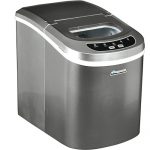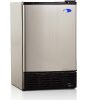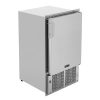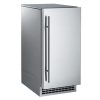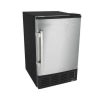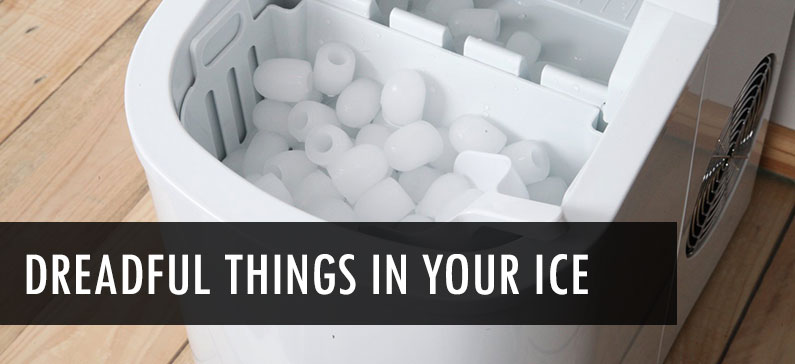
When one thinks about ice, they don’t think about the health hazards lurking in it, but the ability of it to cool their drink down during a hot summer day. However, you would be shocked how many awful things can be found in a single cube of ice. Luckily, there are numerous safety mechanisms responsible for preventing the contamination, but most people don’t care about it until it’s already too late.
We have covered some potential dangers so that you can avoid or prevent bad things from happening to you, your family, or anyone who gets in contact with the ice coming from your machine.
Bacteria
As you might have assumed, many types of bacteria can be found in an ice cube. Some of the most hazardous ones are Escherichia Coli, Salmonella, Listeria, and even the Norwalk virus. The reason why some big food chains have a problem with contaminated ice is the lack of hygiene and inconsistent maintenance. Luckily, tap water is very rarely contaminated with these pathogens meaning you don’t have to worry about getting any of these at home, as long as you follow some basic hygiene rules.
The most important things you should do to prevent such scenarios is to wear gloves, use a scoop, and regularly clean your unit. If you want more detailed instructions, read our handling tips article.
Mold
When there is humidity there is also mold; it’s an inevitable occurrence. However, freezing temperatures do prevent mold from forming, but the problem emerges when ice machines are regularly turned off. The worrying thing with mold is the fact that it doesn’t take much time for it to grow. In fact, some types of mold can appear only several hours after the unit has been shut off. The most obvious solution for preventing the growth is regular and thorough maintenance.
If your unit has been off for some time, make sure to clean it as best you can. Bear in mind, wiping the machine with a wet cloth for a few minutes doesn’t mean it’s completely clean. In fact, it most definitely isn’t. The emphasis is on the word “thorough.” If you think you’re incapable of cleaning it completely, don’t hesitate to hire a professional to do it for you. It may cost you a bit of money, but it’s worth every penny because your health is in question.
Dirty Hands Carry Horrible Things
The number one reason for contaminated ice is dirty hands; there’s no question about it. You might have a habit of washing hands before every meal, but you hardly wash your hands before putting ice in your drink. Therefore, the moment you put your dirty hands into the ice maker and grab a few cubes, you’ve probably contaminated the whole batch.
The solution sounds simple, but it’s one of the hardest things for people to get used to. You have a few possible options. The first one is to hold a sanitizer on your kitchen counter and use it every time you take ice from the unit. It’s safe to say that it’s pretty unlikely you’ll do that. The other option is to use an ice scoop and wash it on a regular basis. It’s a more convenient method, but you can never be certain it’s 100% clean. The third and the most likely option is to use gloves. Using gloves is also the cheapest way and the easiest to get used to.
Words of Consolation
After reading this article, you are probably afraid to use ice ever again considering the possible consequences. However, there is no reason to get concerned because the human immune system is well-prepared for these things. Most of these bacteria can’t go past our immune system and cause any significant damage. On the other hand, people who have a weaken immune system for whatever reason should take great care about the hygiene levels in the kitchen.
It doesn’t take much to protect yourself from these hazardous things; it’s only a matter of habits. Once you get used to doing it, you won’t even think about it, and you’ll do it instinctively. At the end of the day, one’s health is the most important thing to care about.


